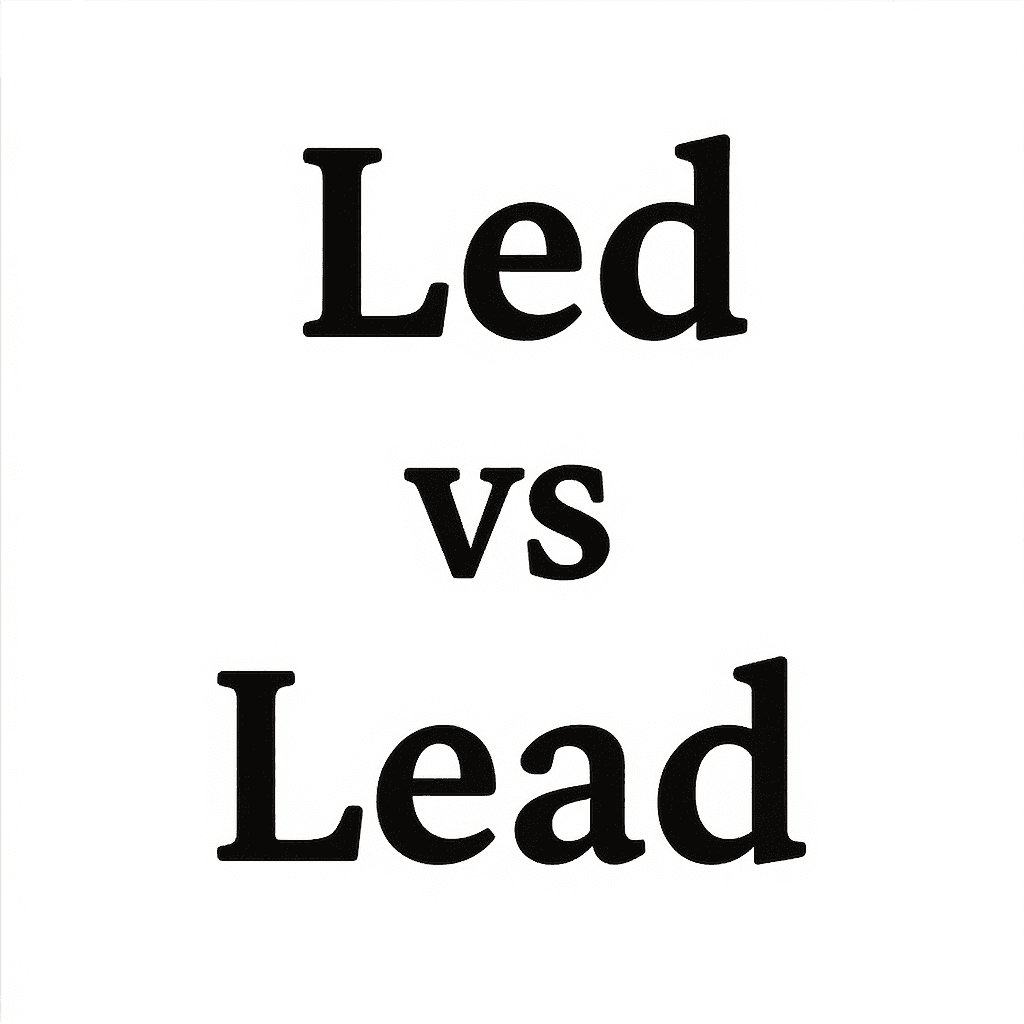“Led” vs. “Lead”: What’s the Difference?
 Led and lead often confuse writers because they’re spelled almost the same — and both relate to the idea of guiding or directing.
Led and lead often confuse writers because they’re spelled almost the same — and both relate to the idea of guiding or directing.
The difference lies in time: one is past tense, and the other is present.
Let’s make it crystal clear.
Led: The Past Tense of “Lead”
Meaning
“Led” is the past tense and past participle of the verb lead.
It means guided, directed, or was in charge of in the past.
Examples of “Led” (10 total)
- She led the team to victory.
- He led the discussion yesterday.
- The teacher led the students to the museum.
- They led the project successfully.
- The guide led us through the forest.
- He led a quiet life after retirement.
- The captain led by example.
- The protest was led by young activists.
- She led her company to great success.
- The general led his troops bravely.
🧠 Tip:
If the action already happened, use led (never “lead”).
Lead: The Present Tense or a Noun
Meaning
“Lead” (pronounced leed) is the present tense form of the verb — meaning to guide or to be in charge.
But “lead” can also be a noun, pronounced led, referring to a metal element (like in pencils or batteries).
Examples of “Lead” (10 total)
- I will lead the meeting tomorrow.
- They lead their team with confidence.
- Great teachers lead by example.
- She wants to lead a happier life.
- Good managers lead rather than control.
- He tried to lead the conversation.
- The singer will lead the performance.
- Dogs can be trained to lead the blind.
- The detective followed a lead in the case.
- The pipes are made of lead metal.
🧠 Tip:
If it’s happening now or describes a material, use lead.
Quick Comparison Table
| Word | Part of Speech | Meaning | Example |
|---|---|---|---|
| Led | Verb (past tense) | Guided or directed in the past | She led the meeting yesterday. |
| Lead | Verb (present tense) | To guide or be in charge | She will lead the meeting tomorrow. |
| Lead | Noun | A type of metal | Old pipes were made of lead. |
How to Remember the Difference
👉 Led = Past tense (already happened)
👉 Lead = Present tense or the metal
🔹 One easy trick:
If you can replace it with guided or directed, use led.
If you can replace it with guide or direct, use lead.
Why AI Often Gets It Wrong
Because both words are pronounced similarly and often appear in leadership contexts, AI writing tools can confuse them.
That’s why Humanizey helps polish AI-generated text — fixing subtle tense mix-ups like “lead” vs. “led” to make writing sound naturally correct.
FAQs
1. Is “lead” ever correct as a past tense?
No. The correct past tense of “lead” is led, not “lead.”
2. Why does “lead” sound like “led”?
Because “lead” (the metal) is pronounced the same way as “led.” English loves tricky exceptions!
3. Can “lead” be both a verb and a noun?
Yes. As a verb, it means “to guide.” As a noun, it can mean “a clue” or “a metal.”
4. What’s an easy way to remember?
Think: “Yesterday she led, today she leads.”
Practice: Choose the Correct Word (“Led” or “Lead”)
(Answers are listed at the end.)
- She ___ the team to victory last year.
- He will ___ the discussion tomorrow.
- The guide ___ us through the forest safely.
- These pipes are made of ___.
- The teacher ___ the class trip yesterday.
- Good leaders always ___ with kindness.
- The manager ___ a great project last month.
- The detective followed a new ___.
- They want to ___ the company into the future.
- She has always ___ by example.
Answers
- led
- lead
- led
- lead
- led
- lead
- led
- lead
- lead
- led
